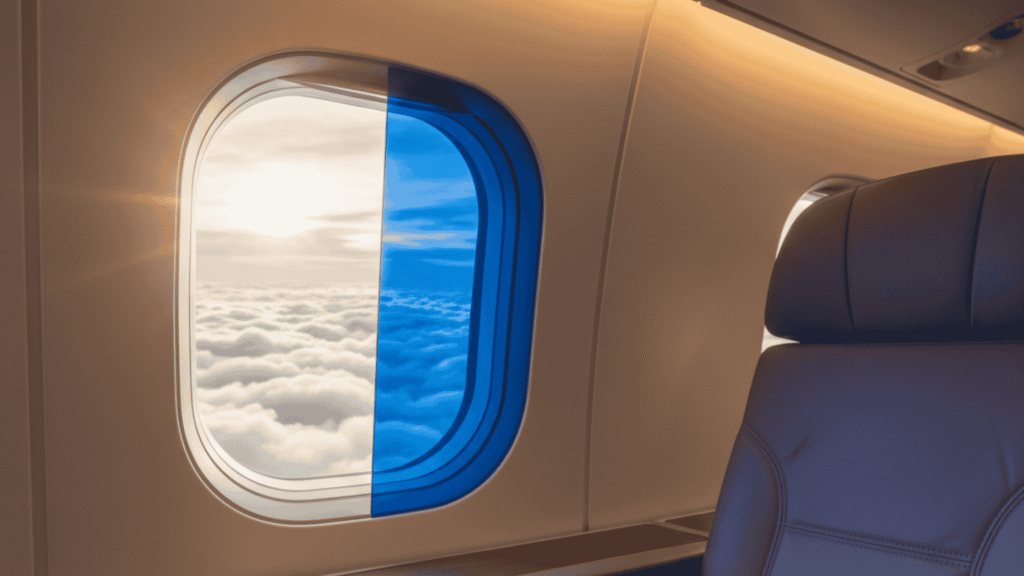Smart glass, once a futuristic concept, has rapidly evolved to find groundbreaking applications in various industries. One of the most intriguing sectors embracing this technology is Aerospace. In this article, we delve into the untold possibilities of smart glass applications in Aerospace, exploring how this innovation is reshaping the way we experience and perceive air travel.
Introduction Of Smart glass
Smart glass, also known as switchable glass, is a dynamic technology that can alter its light transmission properties when voltage, light, or heat is applied. In the aerospace industry, this technology has gained traction for its ability to enhance the overall flying experience, both for passengers and crew members.
Evolution of Smart Glass in Aerospace
In its early days, smart glass faced limitations in terms of functionality and adaptability. However, relentless innovation has led to significant advancements, opening new doors for its applications in the aerospace sector. Today, smart glass plays a pivotal role in improving various aspects of air travel.
10 Smart Glass Applications in Aerospace
Smart glass applications in the aerospace industry have witnessed a transformative impact, revolutionizing various aspects of aircraft functionality and passenger experience.
Let’s delve into the 10 Smart Glass Applications in Aerospace:
Heads-Up Display (HUD)
Heads-up display (HUD) systems, powered by this intelligent glass, serve as a pivotal interface between pilots and crucial flight information. This application goes beyond mere data projection; it integrates real-time data, such as airspeed, altitude, and navigation cues, directly onto the cockpit windshield. This not only minimizes the need for pilots to divert their gaze to traditional instrument panels but also enhances situational awareness, contributing to safer and more efficient flights.
Augmented Reality Cockpit
The augmentation of reality within the cockpit is a groundbreaking application of this switchable glass technology. By overlaying virtual elements onto the actual environment, pilots gain a comprehensive view of their surroundings. This includes vital information like terrain mapping, weather conditions, and even virtual waypoints. This augmented reality (AR) integration significantly improves navigation precision and decision-making, especially in challenging or dynamic flight scenarios.
Smart Windows
Smart windows, a marvel of engineering, dynamically adjust their tint based on external conditions. These conditions include factors such as sunlight intensity and external temperature. This intelligent adaptation not only reduces glare and heat within the cabin but also contributes to energy efficiency. Passengers and crew benefit from a more comfortable and visually optimized environment, creating an overall positive in-flight experience.
Virtual Maintenance Assistance
This intelligent glass extends its utility beyond the cockpit to aircraft maintenance. Maintenance crews equipped with smart glass receive real-time guidance and information during repairs. This hands-free access to manuals, schematics, and step-by-step instructions enhances efficiency, reduces the likelihood of errors, and minimizes downtime. The result is a streamlined maintenance process that keeps aircraft in optimal condition.
Pilot Training Simulators
In the realm of pilot training, smart glass applications bring a new level of realism to simulators. Trainees experience augmented reality scenarios mirroring actual flight conditions. From simulated emergencies to complex manoeuvres, this intelligent glass enhances the training environment, allowing pilots to develop and refine their skills in a controlled yet immersive setting.
In-Flight Entertainment
Transforming the passenger experience, smart glass turns windows into interactive displays. Passengers can engage with a variety of content, from interactive maps displaying the flight route to personalized entertainment options. This not only adds a layer of entertainment but also provides a unique and customizable in-flight experience, catering to the preferences of individual travellers.
Cabin Lighting Control
This glass plays a role in regulating the amount of natural light entering the cabin. This dynamic control not only contributes to energy efficiency but also creates a comfortable atmosphere for passengers. The ability to adjust ambient lighting based on the time of day or flight conditions enhances the well-being of passengers during long-haul flights, promoting a more pleasant travel experience.
Enhanced Passenger Experience
Beyond entertainment, smart glass contributes to a holistic passenger experience. By offering personalized information displays, passengers can access relevant details about their journey, including flight status, destination information, and even local weather updates. The customization extends to ambient lighting controls, allowing passengers to tailor the cabin environment to their preferences, enhancing overall satisfaction.
Health Monitoring Systems
This glass can integrate health monitoring systems to provide real-time data on passengers’ well-being. This application is particularly crucial during long-haul flights, where monitoring vital signs and assessing overall health can contribute to passenger safety. The seamless integration of health monitoring into the smart glass system adds an extra layer of care and attention to passenger welfare.
Advanced Navigation Systems
Aerospace navigation benefits significantly from smart glass applications. Pilots gain access to augmented reality navigation aids that overlay critical information onto their field of view. This includes real-time route adjustments, weather updates, and terrain information. The integration of advanced navigation systems enhances pilot decision-making and ensures a safer and more efficient flight experience.
Conclusion
Exploring these 10 smart glass applications in Aerospace unveils a new era of innovation where technology not only meets but surpasses the demands of modern aviation. As these applications continue to evolve, the aerospace industry stands on the brink of even greater advancements, promising a future where smart glass plays an increasingly integral role in shaping the skies.
FAQs
How does smart glass contribute to fuel efficiency in aircraft?
This glass, being lightweight, reduces the overall weight of the aircraft, leading to improved fuel efficiency.
What safety features does smart glass bring to the cockpit?
It enables heads-up displays and augmented reality applications, enhancing pilots’ situational awareness and overall safety.
Are there any privacy concerns associated with the use of Switchable glass in aircraft windows?
Innovations in privacy filters address concerns related to passenger privacy when using dimmable windows.
How does Switchable Glass contribute to environmental sustainability in aviation?
Switchable glass reduces energy consumption and offers eco-friendly solutions, aligning with the aviation industry’s push for greener practices.
What are the key factors influencing the global adoption of Switchable glass in Aerospace?
Factors include advancements in technology, proven case studies, and a growing awareness of the long-term benefits of Switchable glass applications.





